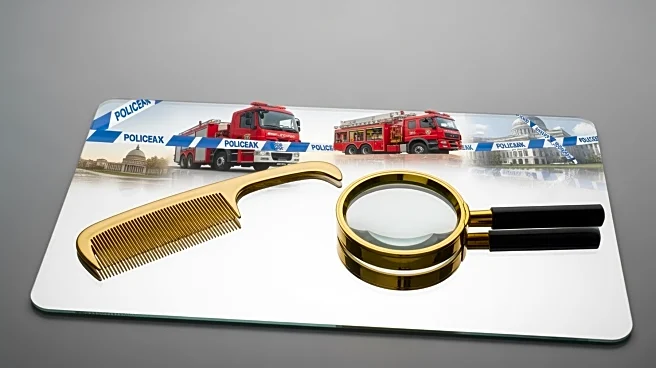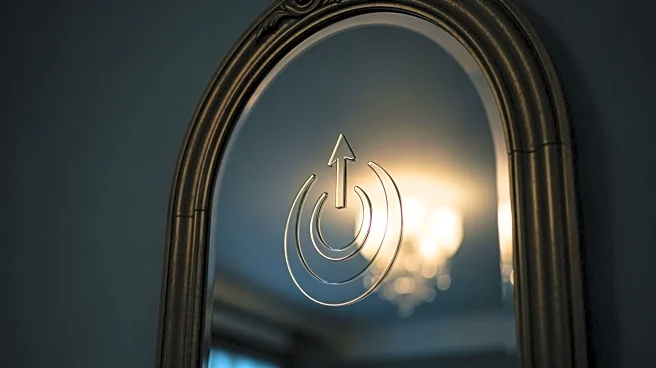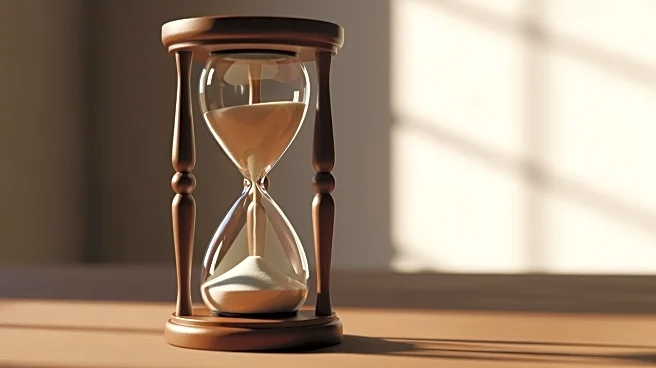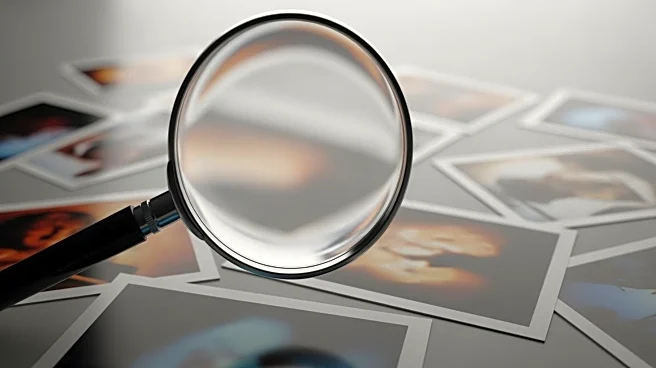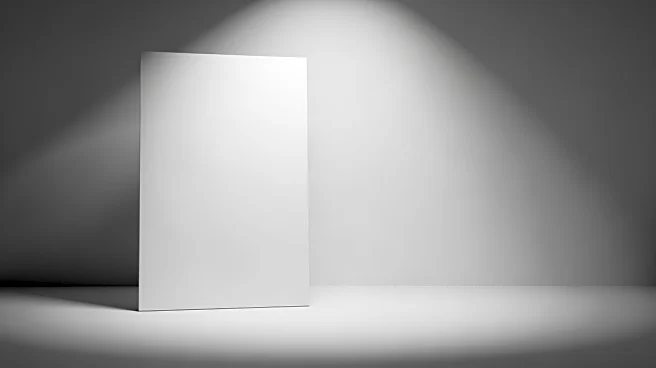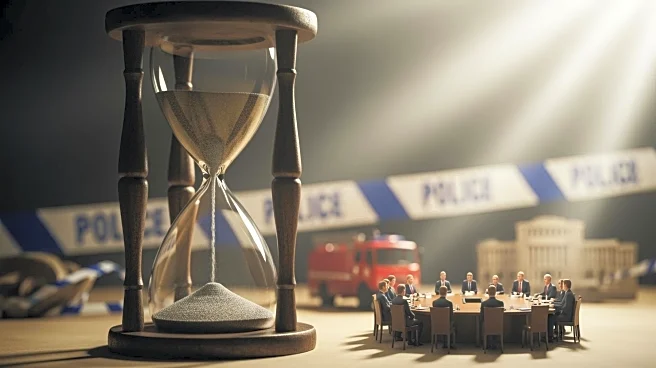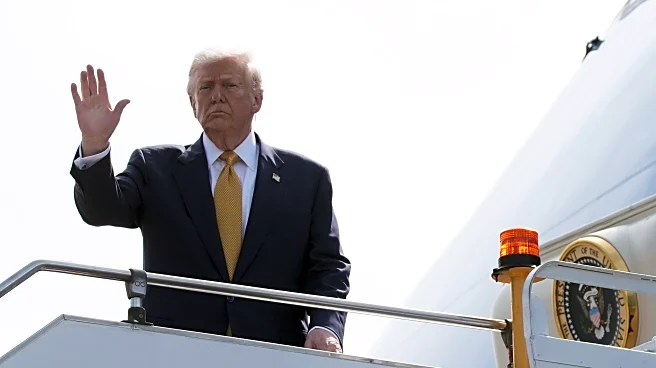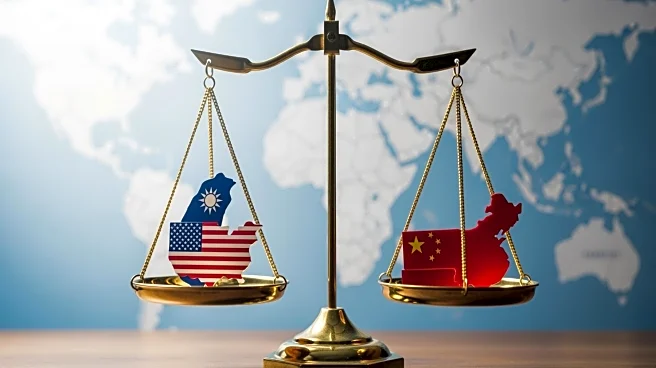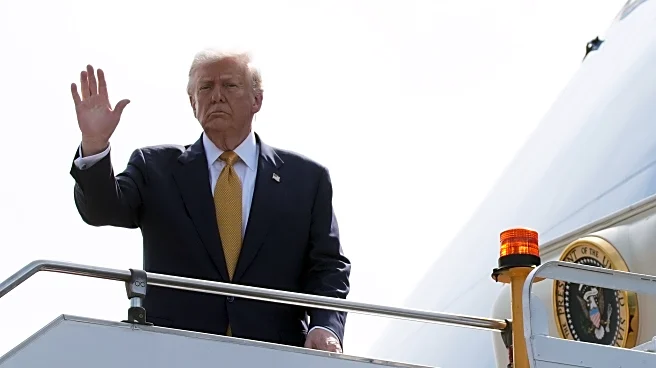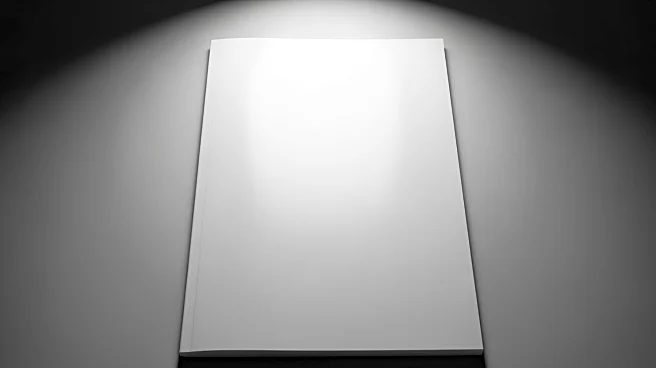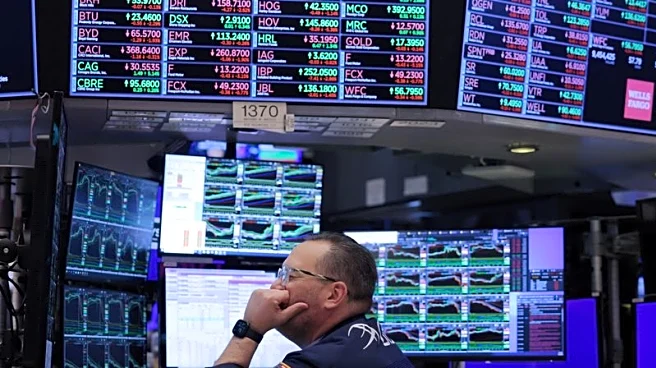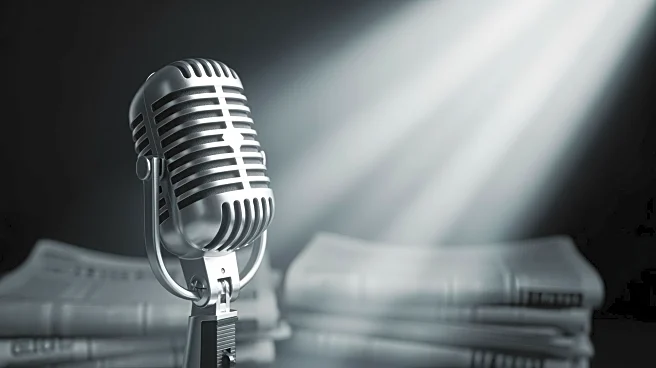What's Happening?
President Trump has expressed dissatisfaction with his latest appearance on the cover of Time Magazine, scheduled for release next week. The cover features Trump in a power pose behind the Resolute Desk, with a headline declaring 'TRUMP’S WORLD.' Trump criticized
the photograph, claiming it made his hair 'disappear' and included a floating crown-like object above his head, which he described as 'really weird.' The image has drawn comparisons to a historical photograph of Alfred Krupp, a German industrialist and convicted Nazi war criminal, taken by Arnold Newman in 1963. The photographer, Steven Voss, reportedly liked a comment on Instagram noting the similarity, although the like was later removed.
Why It's Important?
The controversy surrounding the Time Magazine cover highlights ongoing tensions between President Trump and media outlets. Trump's reaction underscores his sensitivity to media portrayals and the potential impact on his public image. The comparison to a photograph associated with Nazi Germany adds a layer of historical and ethical complexity, potentially influencing public perception and discourse. This incident may affect Trump's relationship with the press and his supporters, as well as contribute to broader discussions about media representation and political imagery.
What's Next?
The release of the Time Magazine cover may prompt further reactions from political commentators, media analysts, and the public. It could lead to discussions about the role of media in shaping political narratives and the ethical considerations of using historical imagery in contemporary contexts. Trump's response may also influence his future interactions with media outlets and his approach to managing his public image.
Beyond the Headlines
The use of imagery with historical connotations raises questions about the ethical responsibilities of media in portraying political figures. It may spark debates about the influence of visual media on public perception and the potential for historical references to shape contemporary political narratives. This incident could contribute to ongoing discussions about the power dynamics between political leaders and media organizations.
